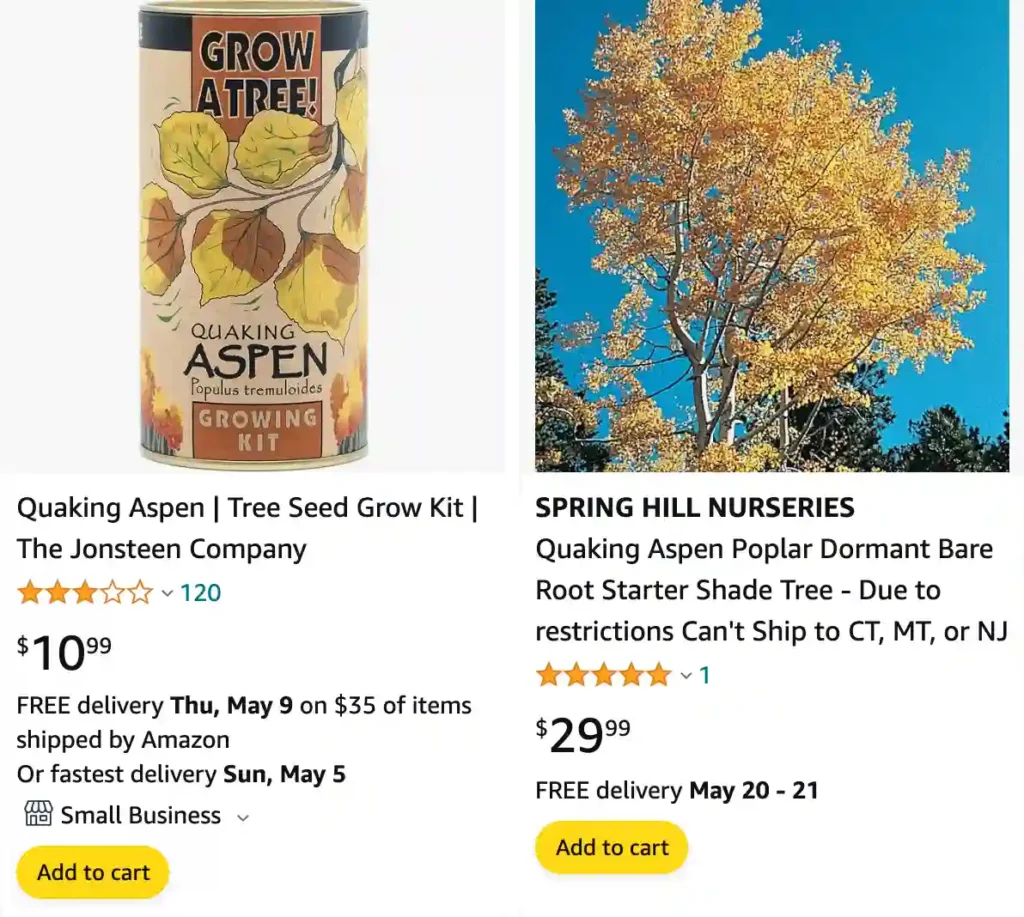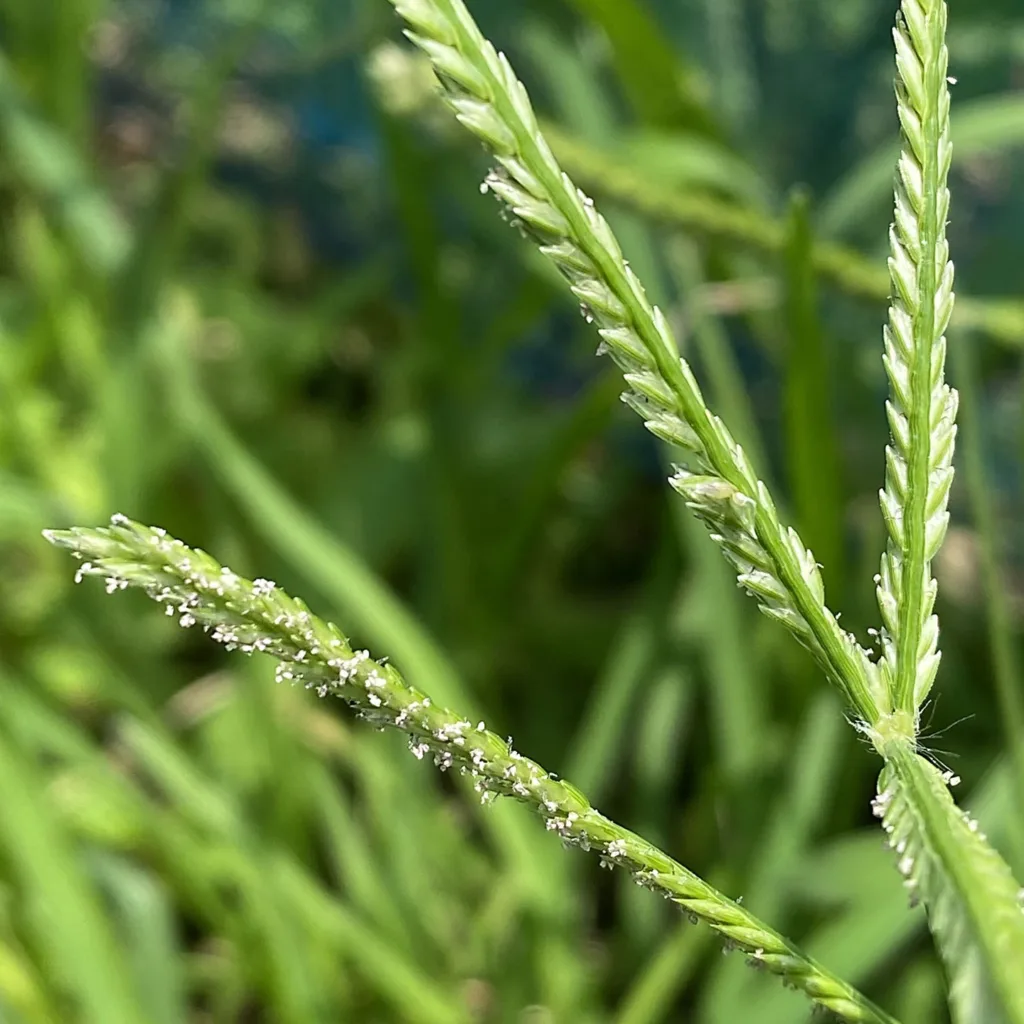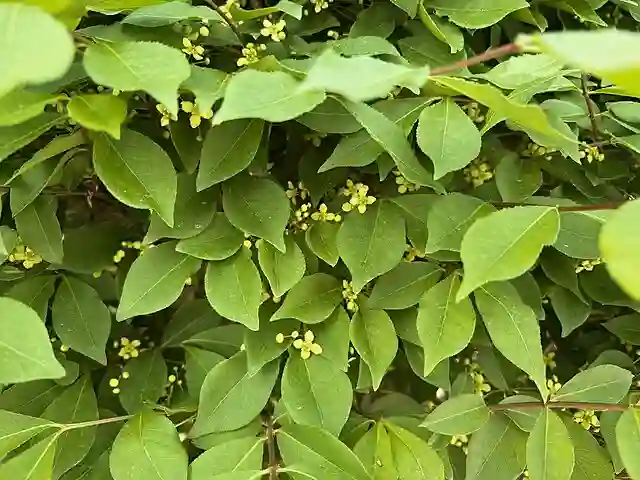
What is an aspen tree?
As someone who spends a lot of time hiking in the mountains, I’ve come to recognize aspens easily. They’re these beautiful, medium-sized trees with smooth, white bark that almost glows in the sunlight. But what really gives them away are the leaves. They’re kind of round and have long, thin stems that make them tremble in the slightest breeze. It’s like they’re constantly whispering secrets to each other. There’s something calming about watching a whole grove of aspens quiver in the wind, especially in the golden light of autumn when their leaves turn a fiery orange.
What does an aspen tree look like?
Absolutely! As someone who spends a lot of time hiking in the mountains, I’ve come to recognize aspens easily. They’re these beautiful, medium-sized trees with smooth, white bark that almost glows in the sunlight. But what really gives them away are the leaves. They’re kind of round and have long, thin stems that make them tremble in the slightest breeze. It’s like they’re constantly whispering secrets to each other. There’s something calming about watching a whole grove of aspens quiver in the wind, especially in the golden light of autumn when their leaves turn a fiery orange.
Where do aspen trees grow?
I’ve come across aspen trees in many places during my hikes, but they seem to prefer cooler regions. They’re like the high-altitude celebrities of the tree world. In North America, you’ll find them scattered throughout the western states, especially in Utah and Colorado, where they tend to grow at elevations between 5,000 and 12,000 feet. They also like areas with plenty of sunshine and moist soil, so you won’t find them competing for space with shade-loving conifers. Interestingly, aspen trees can also be found in parts of Canada, Mexico, Europe, and even Asia!
How fast do aspen trees grow?
Let me tell you, aspen trees are the speedsters of the forest! Unlike some of those slowpokes like oak trees that take forever to mature, aspen trees shoot up surprisingly fast. In the years I’ve spent hiking, I’ve noticed young aspen saplings grow by what seems like feet in a single summer. They can easily reach two feet or more per year until they hit their full height. It’s no wonder they often grow in dense clusters – they’re all racing to see who can reach the sunlight first! This quick growth makes them perfect for filling in empty spaces or creating windbreaks, but it also means their lifespan isn’t the longest. Still, it’s pretty impressive to watch how fast these aspen groves can take over a hillside.
How long do aspen trees live?
This is where things get interesting with aspen trees. The individual above-ground parts of the tree, the trunk and branches we see, don’t live as long as you might think. In my experience hiking through aspen groves, I’ve read signs mentioning they typically only live for 40 to 150 years. That might seem short compared to some giants like redwoods, but here’s the surprising part: the root system is where the real magic happens. It’s like a giant underground network that can be thousands of years old! One grove in Utah, nicknamed “Pando,” is estimated to be over 80,000 years old. So, while the individual aspen trees I hike past might not be ancient, they’re all part of a much older and fascinating organism. It’s like a giant family tree that keeps growing new trunks and branches, even though some of the older ones eventually die off. Pretty cool, right?
How to plant aspen trees?
planting aspen trees can be tricky, and I wouldn’t recommend it unless you have a good amount of space and the right conditions. They’re not your typical plant-a-seed-and-forget-it kind of tree. Here’s the thing: aspen trees are notorious for spreading through their roots, sending up suckers all over the place. This can be great if you want a big grove, but not so great if you have a small yard and don’t want aspen popping up everywhere.
If you’re set on planting one, your best bet is to find a young sapling from a nursery, not try to grow from seed. Look for a spot that gets plenty of cool morning sun and afternoon shade, with moist but well-drained soil. As for spacing, be warned – aspen trees can grow wide as they mature, thanks to their connected root system. You might be tempted to plant them close together for a quick grove, but trust me, leave them plenty of room – at least 15-20 feet apart – to avoid crowding and future battles with unwanted saplings. And be prepared to keep an eye out for suckers and prune them back if they start popping up outside your designated aspen zone!
Are aspen trees connected?
Absolutely! Unlike most trees with independent root systems, aspen trees are the ultimate networkers in the forest. They’re connected below ground by a massive root system that stretches out for acres. It’s like a giant web that weaves through the soil, linking all the aspen trees in a grove together. This shared root system is what makes them one giant organism, even though they appear as separate trees above ground. It’s pretty fascinating to think that the aspen I’m leaning against while resting on a hike could be sharing nutrients with another one way over there! This connection helps them survive and thrive – they share resources, support each other, and even send out warning signals through the roots if one tree gets attacked by insects. It’s a beautiful example of cooperation in the natural world.
How to transplant aspen trees?
Transplanting aspen trees is a bit of a gamble, and I’d only recommend it if you’re comfortable with a challenge and have some experience with tree transplanting. Here’s the thing: their success depends heavily on keeping as much of the root system intact, which can be tricky. Aspen trees have shallow, spreading roots that travel far and wide underground. Digging up a decent-sized tree without damaging those roots is tough.
If you’re determined to try, the best time for transplanting is either early spring before they leaf out or fall after the leaves have dropped. Aim for young trees, ideally 3-5 feet tall, as they have a higher chance of establishing themselves. Remember, you’ll need a shovel with some muscle behind it – those roots can be surprisingly tough! Dig a wide hole, at least five times wider than the trunk diameter, but not too deep – focus on getting the outer edges of the root system. Wrap the root ball in burlap or something similar to protect it as you move the tree. In its new home, dig a similarly wide hole and plant the aspen at the same depth it was originally. Water generously and keep the soil moist throughout the first growing season to help the tree recover from the shock of transplanting. Be aware that even with careful handling, there’s no guarantee it will survive. So, proceed with caution and be prepared for some extra TLC!
How do aspen trees reproduce?
Aspen trees are sneaky tricksters when it comes to reproduction. They have two methods, but one is the clear champion. Most of the time, you won’t see any flowers or seeds on aspens. Their main strategy is asexual reproduction through their root system. It’s like a superhighway underground, sending out shoots that sprout into new aspen trees. These new trees are basically clones of the parent tree, sharing the same DNA. This allows aspen groves to spread quickly and efficiently, creating vast networks of genetically identical trees.
Sex with seeds is also an option, but it’s kind of a backup plan. I’ve rarely seen aspen catkins, the little dangly things that hold pollen and eggs, during my hikes. Maybe they flower when I’m not around? Even if they do manage to produce seeds, they have very little fluff to help them travel on the wind. Plus, aspen seedlings need very specific conditions to germinate and survive, which makes them less common than the root sprout method. So, while aspen trees can technically reproduce sexually, their asexual root system is the real powerhouse behind their success. It’s a fascinating way to ensure the survival of these remarkable trees!
Can aspen trees grow in Texas?
As someone who enjoys hiking, I can tell you aspen trees are a bit picky about where they live. They generally prefer cooler climates at higher altitudes. In Texas, the scorching heat and flat plains just aren’t their thing.
However, there is a twist! Texas does have a few isolated pockets of aspen trees clinging to survival in the high mountain ranges like the Guadalupes, Chiisos, and Davis Mountains. These lucky aspen get a taste of the cooler temperatures they crave up there above 7,000 feet. So, while you won’t find sprawling aspen groves in the typical Texan landscape, there are a few stubborn holdouts hanging on in the mountains.
Do elk eat aspen trees?
Absolutely, elk and aspen trees have a bit of a complicated relationship. As someone who spends a lot of time in the mountains, I’ve seen firsthand the evidence of elk munching on aspen. In the winter, when other food sources are scarce, the bark of aspen trees becomes a critical food source for elk. They can strip away large patches of bark, leaving dark scars on the lower trunk. I’ve even seen them devour young aspen shoots and leaves in the summer and fall.
This can be a bit of a problem for aspen trees. If there are too many elk in an area, they can damage the trees so much that they struggle to regenerate. It’s like an all-you-can-eat buffet for the elk, but not so great for the long-term health of the aspen groves. However, it’s also part of the natural balance in these ecosystems. So, while elk might seem like the villains for aspen trees, it’s all about finding that right balance between the two.
How to stop aspen tree shoots?
As someone who spends a lot of time in nature, I’ve battled with aspen suckers (shoots) trying to take over my garden more than once. Here are a few ways to tackle them:
- Manual Removal: This is the most eco-friendly option. Persistently chop off new shoots with a shovel or loppers whenever they appear. Try to remove them when they’re young and tender, as they’re easier to deal with. The key is to be relentless – those suckers are persistent!
- Herbicide: This is a more drastic option, but it can be effective if you have a large area to manage. Look for a broadleaf herbicide labeled for use on aspen and be sure to follow the instructions carefully. Only apply it directly to the cut stem of the sucker, avoiding desirable plants nearby.
- Root Barrier: If you want to prevent suckers from encroaching on a specific area, consider installing a root barrier. This is a sheet of plastic or metal buried vertically around the perimeter of the area you want to protect. It disrupts the root system and discourages new shoots from emerging.
Remember, whichever method you choose, be prepared for a long-term battle. Aspen trees are known for their stubborn persistence, and you might need to keep removing suckers for several seasons before they give up.
Where to buy aspen trees near me?
I found the best place to buy aspen trees near me was at a local nursery called Green Haven Garden Center. They had a variety of sizes available, from saplings to more mature trees, which was perfect for what I needed. The staff there were really helpful and knowledgeable, giving me advice on how to properly plant and care for the trees once I got them home. It was such a pleasant experience, and now I have beautiful aspen trees adorning my yard thanks to their assistance.
How much do aspen trees cost?
The cost of aspen trees can vary depending on several factors such as their size, age, and where you purchase them from. When I was looking to buy aspen trees, I found that smaller saplings were more affordable, usually ranging from $20 to $50 each. However, larger and more mature trees can be significantly more expensive, sometimes costing several hundred dollars each. Ultimately, I decided to go for a mix of sizes to fit my budget and landscaping needs. It’s definitely worth shopping around and comparing prices at different nurseries to find the best deal.
If i die, water my plants!



